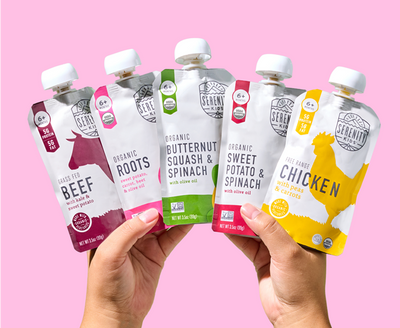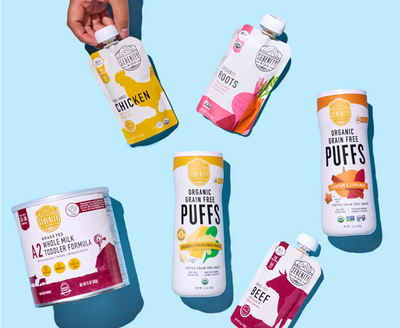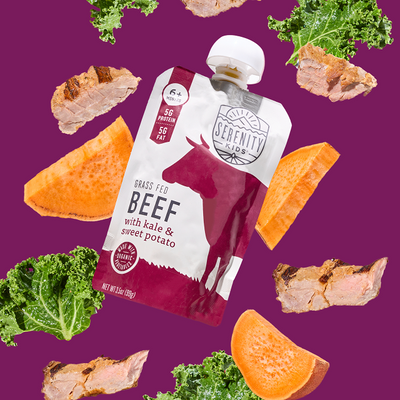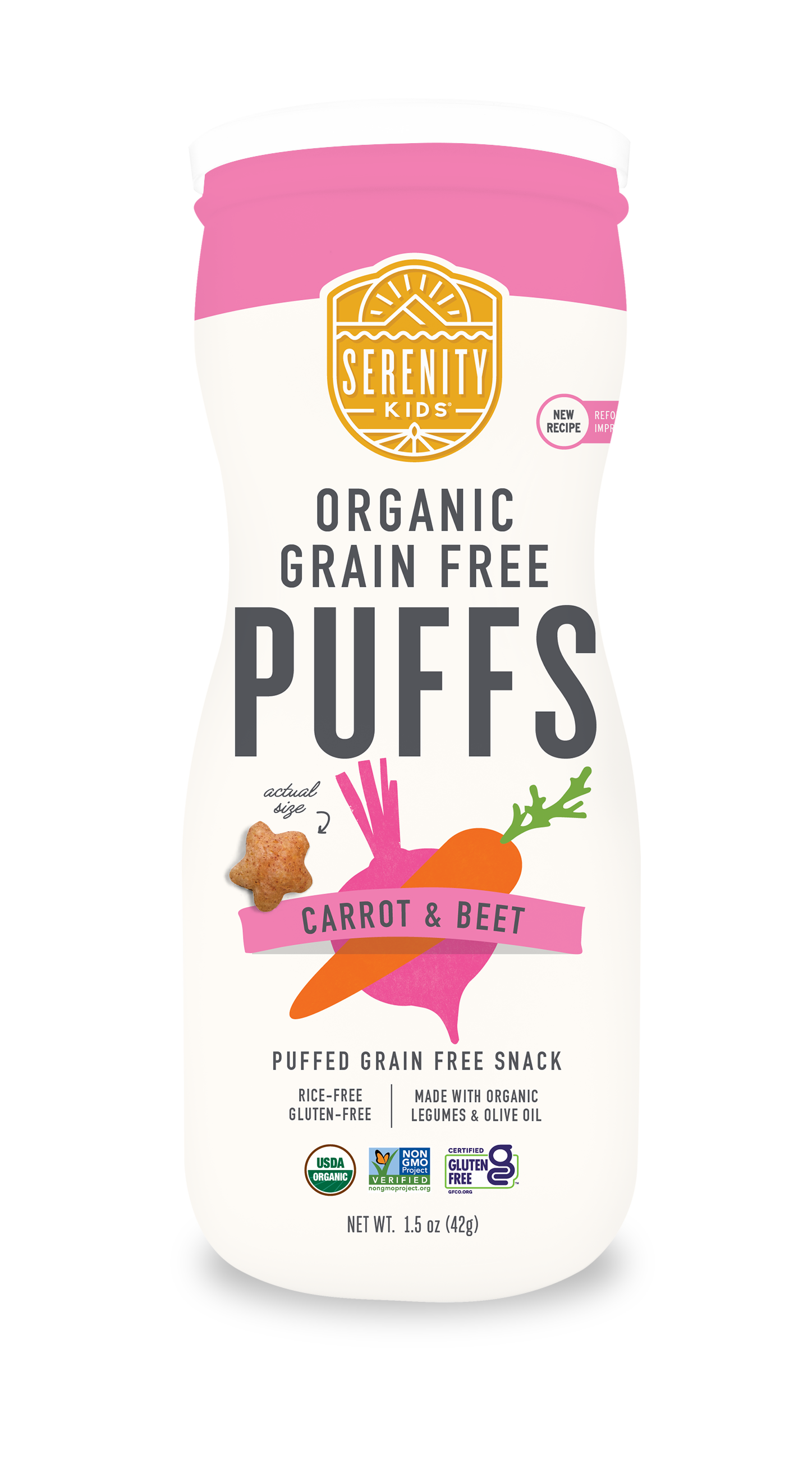TABLE OF CONTENTS
Written by Joe Carr
August 30, 2021
How Industrial Seed Oils can be Harmful

If you follow the nutrition world in any capacity, you know that fat is our friend once again. You probably hear a lot about the benefits of “good fats” for all of us, from babies and toddlers to breastfeeding mamas and health-conscious fathers.
But you don’t hear nearly as much about the “bad fats.” I’m not just talking about fried foods and trans fats, I’m talking about industrial seed oils that have worked their way into just about every restaurant kitchen, food manufacturer, and kitchen cupboard in America.
Since these oils are now so prevalent in our food system, you might not give them a second thought. Sure, maybe they aren’t the best of the best, but are they really the worst for your health? That’s up for debate. Here’s what we know.
What are Industrial Seed Oils?
Industrial seed oils are highly processed oils extracted from the seeds of various plants like soybeans, corn, rapeseed (the source of canola oil), cottonseed, and safflower seeds.
Industrial seed oils are primarily polyunsaturated fats, which means that their chemical structure has many unsaturated or double bonds (poly = many). The reason this matters is that double bonds are a source of vulnerability in a fat.
The more double bonds a fat has, the more unstable it is and the more opportunities it has to be damaged (to oxidize or become rancid) by elements like light, heat, and air. Rancid industrial seed oils also tend to be high in omega-6 fatty acids and have an imbalanced omega-6:3 ratio (more on why that matters here).
What Qualifies as an Industrial Seed Oil?
Before we get into the discussion of how industrial seed oils are made, why we don’t want them in our bodies, and what Serenity Kids uses instead, let’s get on the same page. When we refer to industrial seed oils, we’re talking about the following types of oils. Dr. Cate Shanahan refers to these as the “hateful eight”:
-
Canola
-
Sunflower
-
Safflower
-
Corn
-
Soybean
-
Cotton seed
-
Grapeseed
-
Rice bran
Where Did They Come From?
In the grand scheme of our nutritional history, industrial seed oils are actually a relatively new invention.
Seed oils weren’t introduced into our food supply until the early 1900s. Interestingly, they got their start when businessmen Proctor & Gamble wanted to find a cheaper alternative to animal fats for their new bar soap. They started mass producing cottonseed oil, a waste product of cotton farming and even created a subsidiary of their business to manage its production and operations.
So how did this oil go from soap to food? Well, of course Proctor and Gamble were looking for more ways to use this new product they invested in. Edwin Kayser, a German chemist, caught wind and wrote to them on October 18, 1907 about a new chemical process that could create a solid fat from a liquid. This piqued the interest of Proctor and Gamble who had been interested in producing a solid form of cottonseed oil for years. So, the company purchased US rights to the patents and created a lab on the Procter & Gamble campus to experiment. Proctor & Gamble scientists quickly found that they could produce a creamy, pearly white substance out of cottonseed oil. They were delighted to see that it looked a lot like the most popular cooking fat of the day: lard. And there, in the soap-making lab, became the first industrial seed oil, a hydrogenated oil made from the waste of cotton production. It was quickly brought to market and sold to home cooks as a better alternative to animal fats. And thus began the “Era of Crisco”.
It was quite the journey to the kitchen table, and one that seemed even far fetched at the time. In fact, an issue of Popular Science from the era sums up the evolution of cottonseed with the following sentiment: "What was garbage in 1860 was fertilizer in 1870, cattle feed in 1880, and table food and many things else in 1890."
Cottonseed was only the beginning of the rise of vegetable oils. Crisco’s success rose quickly as unfounded fears of saturated fat surfaced. (That’s a whole other history lesson, which involves some bad science that changed the way Americans viewed fat.) Food manufacturers quickly learned that they could capitalize on this fear while increasing margins by producing cheaply-made and highly processed oils out of “plant” foods and call it “heart healthy vegetable oil”.
Soybeans were introduced to the United States in the 1930s, and by the 1950s, soybean oil became the most popular vegetable oil in the country. The trend continued, and canola, corn, and safflower oils followed shortly after that.
The result? Vegetable oil consumption rose dramatically between the beginning and end of the 20th century. This change in the diets of Americans, from natural sources of cooking fats like lard and tallow to highly processed oils came at the same time as a shift from cooking from scratch at home to the introduction of convenience foods that were filled with the same processed oils. Of the many things which have changed in the human diet in the past 150 years, one could make the case that the greatest change might be due to the increase in seed oils and their unfavorable Omega-3/Omega-6 ratios. It is perhaps also worth mentioning that much of the highly processed carbohydrate which has made its way into the modern diet is usually accompanied by seed oils.

How Are Industrial Seed Oils Made?
A little background on how industrial seed oils are made can start to frame why they can be so damaging. Because these foods themselves aren’t exactly naturally rich in oil that is easily pressed (like an olive or coconut), their oils must be refined, bleached, and deodorized before they are suitable for human consumption. Here’s how that works:
-
Step 1: Seeds are gathered from their plants.
-
Step 2: The seeds are heated to extremely high temperatures. This is done for sterilization purposes, but it causes the unsaturated fatty acids in the seeds to oxidize, creating free radicals that can be harmful to health.
-
Step 3: The seeds are generally processed with a petroleum-based solvent, such as hexane, to maximize the amount of oil extracted from them.
-
Step 4: Chemicals are used to deodorize the oils, which have an undesirable smell once extracted. The deodorization process can produce trans fats, which are widely recognized to be potentially harmful to human health.
-
Step 5: More chemicals are added to make the color of the industrial seed oils more neutral and appealing. 2
The Risks of Consuming Industrial Seed Oils
If it isn’t already clear, industrial seed oils are not “heart healthy” or otherwise beneficial for our bodies and brains. In fact, despite organizations like The American Heart Association touting these terrible oils as “better for you”, there is quite a bit of research that suggests that they’re just the opposite, contributing to chronic inflammation and disease. Here’s why.
-
They are imbalanced in Omega 6:3
As we discuss in depth, the ratio of Omega 6:3 fatty acids is critical to the maintenance of health. In general, we want to seek as low a ratio as possible for optimal health. Industrial seed oils are incredibly high in omega-6 fatty acids, some with an omega 6 to omega 3 ratio as high as 75:1!
-
They can promote inflammation
A high omega 6 to omega 3 ratio can contribute to systemic inflammation in the body. Inflammation is at the root of nearly all disease, and avoiding industrial seed oils is one simple way to manage it.
-
They are void of nutrients and full of damaging free radicals
Industrial seed oils use damaging processing techniques which strip away all nutrients and leave us with an oxidized fat that causes free radicals in the body. Free radical damage plays a major part in the development of chronic and degenerative illness such as cancer, autoimmune disorders, aging, cataract, rheumatoid arthritis, and cardiovascular and neurodegenerative diseases.,
What Oils Are Better?
So with all of their undesirable characteristics, what’s the appeal of industrial seed oils? Well, they’re cheap to produce, and due to all the processing, the result is an oil that is neutral in flavor and color. Their low price and high versatility appeal to both consumers and food manufacturers.
But as we know, cheap food generally isn’t a value at all. What we save in money and time up front, we end up paying for later in the form of deteriorated health.
So what are better fats to use - those that won’t damage our health? Opt for oils that are minimally processed since they are naturally-occurring, and/or more chemically stable so that they remain undamaged by elements like light, heat, and air:
Cooking/baking fats:
-
Coconut oil
-
Avocado oil
-
Grass-fed butter or ghee
-
Organic extra virgin olive oil
-
Lard, tallow, or bacon grease from pasture raised animals
Other healthy fats:
-
Full fat grass-fed A2 dairy
-
80% Grass Fed Beef
-
Pasture raised pork
-
Pasture raised chicken thighs
-
Wild-caught salmon
-
Avocado
-
Responsibly Sourced Organic Palm Oil
-
Organic Cocoa Butter
The Serenity Kids Approach
What we know about industrial seed oils is clear - we don’t want them in our bodies, and we certainly don’t want to feed them to our little ones.
If you start to look at labels, you’ll see that just about every formula on the market - yes, even the “cleaner” and more premium European brands - include industrial seed oils. Even worse, most toddler formulas start with nonfat milk, which strips all natural fat from the milk, and then add industrial seed oils as a source of (unhealthy) fat. What results is a formula that is high in inflammatory oils and omega-6 fatty acids, and devoid of the complex fatty acid profile needed for brain development.

In developing this formula, Serenity Kids extensively studied the fatty acid profile of breastmilk. They mapped out the top twelve fatty acids present in human milk and evaluated the ratios of each. All of the healthy, quality fats included were chosen to balance out the fatty acid profile of the formula. (learn about all of the ingredients in our Grass Fed A2 Whole Milk Formula here):
-
Grass Fed Organic A2/A2 Whole Milk: Check out this article to learn more about why A2. A2 beta-casein proteins (also the type in human milk) are found to be easier to digest than A1 proteins in most cows milk formulas.
-
Organic Coconut oil: Coconut oil is a stable, saturated fat with beneficial fatty acids including medium chain triglycerides (MCTs).
-
Organic Expeller Pressed Extra Virgin Olive Oil: Olive oil contains both monounsaturated and polyunsaturated fats and is rich in a wide variety of fatty acids including palmitic acid, stearic acid, palmitoleic acid, oleic acid, linoleic acid, linolenic acid, arachidic acid, behenic acid, and lignoceric acid. Ours is exclusively sourced from the U.S.
-
Responsibly Sourced Organic palm oil (RSPO): RSPO was included as it is a great source of palmitic acid, an important fatty acid for a child’s development. Breastmilk is very high in palmitic acid, which makes up about 20 to 25% of the total fats in human milk. Palmitic acid is important for brain and organ development and for maturation of the gastrointestinal tract. It is also linked to potential long-term benefits like bone mineralization and strength.
-
Cocoa butter: Cocoa butter was included to mimic the fatty acid profile of myristic acid. Myristic acid is a long-chain saturated fatty acid that is abundant in milk fat and benefits both cardiovascular and metabolic health. As a bonus, cocoa butter also happens to enhance the flavor of the formula.
-
Egg Lecithin: Egg lecithin is a great source of phosphatidylcholine which supports brain development and cognitive health.
-
DHA/ARA from Algae oil - DHA and ARA are essential for brain and eye development. Our DHA and ARA are sourced from algae oil and unlike some others, are not extracted with hexane, which is a neurotoxin.
The bottom line? The type of fat we consume matters. It can have significant and long-term effects on our health. It may sometimes seem difficult to avoid these harmful industrial seed oils as they are so prevalent in our food system, but just because they are everywhere doesn’t mean they are good. When possible, seek out high quality oils and products that are made with them. Hopefully, nutrition science will eventually prevail over the financial interests of food manufacturers, but until then, we can take our health into our own hands and invest the extra effort to find the good fats.
By Hillary Bennetts
Hillary Bennetts is a nutritionist and business consultant focusing on health for mamas and babies through the prenatal, postpartum, and infant/toddler stages. In addition to nutrition consulting she provides business consulting and content creation for companies in the health and wellness industry. Hillary spent almost a decade in corporate consulting before shifting gears to combine her lifelong passion for health and wellness with her business background and nutrition education.
Hillary holds a Bachelors in Economics from Washington and Jefferson College, an MBA from Emory University’s Goizueta Business School, and is certified as a Holistic Nutritionist through Bauman College. She lives in Colorado with her husband and toddler son, with another baby boy on the way in September 2021.
Website - www.hillarybennetts.com
Instagram - @hillarybennetts
1 https://www.jeffnobbs.com/posts/why-is-vegetable-oil-unhealthy
2 https://chriskresser.com/how-industrial-seed-oils-are-making-us-sick/
3 https://www.nature.com/articles/s41591-019-0675-0
4 https://www.ncbi.nlm.nih.gov/pmc/articles/PMC3249911/
5 https://www.ncbi.nlm.nih.gov/pmc/articles/PMC3614697/
You Might Also Like
· 1 min read · Recipes
· 7 min read · Education














































